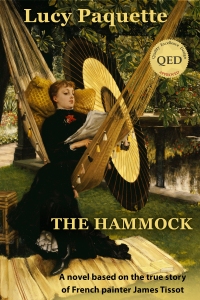To cite this article: Paquette, Lucy. “Who was Algernon Moses Marsden?” The Hammock. https://thehammocknovel.wordpress.com/2013/06/30/who-was-algernon-moses-marsden/. <Date viewed.>

Algernon Moses Marsden (1877), by James Tissot. Oil on canvas, 19 by 29 in./48.26 by 73.66 cm. Private collection. (Photo: Wikipedia)
Algernon Moses Marsden (1847 – 1920), one of fourteen children of Isaac Moses (1809 – 1884) and his second wife, Esther Gomez, was a more colorful character than James Tissot’s urbane portrait of him suggests.
At the age of 18 or 19, Isaac Moses had married Rachel Hyams, the daughter of Hyam Hyams, a Jewish entrepreneur in the ready-made clothing industry. Isaac’s father, Elias Moses (1783 – 1868), owned a small clothier’s business in Houndsditch in east London. With Elias, Isaac Moses established the firm of E. Moses & Son, ready-made clothing manufacturers and retailers, in 1832, first in Ratcliffe Highway in the East End, and soon afterwards in Aldgate, on the edge of the City.
By 1833, Isaac Moses lived with his wife and four young children at 154 Minories, Whitechapel, over the immense emporium of E. Moses & Son, located at the corner of the Minories (near the Tower of London) and Aldgate (154, 155, 156 and 157 Minories, and 83, 84, 85 and 86 Aldgate, City of London).
Rachel Hyams died in 1836, and in 1845, thirty-six-year-old Isaac Moses married the twenty-year-old Esther Gomes Silva (1825 – 1908). Esther was born in 1825 in Kingston, Jamaica to the Gomes Silva family, Sephardic Jews who had lived in Jamaica for generations after fleeing the Inquisition in Spain and Portugal in 1663.
Isaac still lived at 154 Minories, Whitechapel, over the shop, and Esther became the step-mother to Isaac’s five children with Rachel: Julia (16), Kate (14), Maurice (13), Montague (12) and Rachel (9, who died at 10 in 1847).
In 1846, the floor space of the Ready-Made Clothing Emporium at Aldgate grew to four times its original size, and soon nearly doubled again, becoming the largest shop in London: “…the ornate showrooms were spread over three floors, with a galleried well running through the top two floors. Instead of having a lantern or skylight, Moses’s well was illuminated by an enormous chandelier – or gasolier – which was suspended over the main counter, with secondary branches lighting the gallery level.” (Kathryn Morrison, English Shops and Shopping: an Architectural History, Paul Mellon, 2003, via http://tonyseymour.com/people/elias-moses).
“First, the emporium itself was designed to attract custom. It had a high classical portico, tall ground-floor windows, and bright interior lighting, and offered impeccable service to any who wandered in. No building was like it in all of London. Second, little expense was spared in advertising the top-quality clothes, available at such cheap prices and only in the emporium. The advertisements were sometimes placed in magazines but usually they were freely distributed throughout London in the form of little booklets. Many of the latter have survived and show that popular current events were used as the basis for a doggerel (probably composed by Isaac) on the emporium’s virtues. Third, clearly displayed fixed prices cut out any haggling and enabled staff to spend their time cultivating the image of a well-to-do West End bespoke tailors by standing in attendance on customers.” (Andrew Godley’s entry on Elias Moses, Oxford Dictionary of National Biography, 2004, via http://tonyseymour.com/people/elias-moses)
The emporium’s collection of stuffed lions, tigers, giraffes, and more must have attracted many customers as well.
Isaac’s second wife, Esther, bore him fourteen more children, ten daughters and four sons, beginning with Madeleine (1846 – 1880), Algernon (1847 – 1920), Herbert Philip (1848 – 1936), Angelina Florence (1849 – 1854). By 1849, Isaac Moses and his family resided at 11 Sussex Place, Paddington. Another daughter, Edith Josephine, was born (1850 – 1919), followed by Georgina Hester (1851 – 1881). By 1851, Isaac and his family lived at 36 & 37 Gloucester Square, Hyde Park. Constance Rebecca was born (1852 – 1889), and Rodolph Isaac (1853 – 1939). Angelina Florence died at four in 1854, and a year later, Sybila [or Sybilla] Augusta was born. She died the following year. Adela Louise was born (1856 – 1941), followed by Stephen Leopold (1858 – 1940), Isabel Blanche (1861 – 1945), Beatrice Helen (1865 – 1853) and Ida Frances (1868 – 1953).
Toward the end of 1855, Isaac Moses bought the lease to a grand new house at 23 Kensington Palace Gardens. A year later, he commissioned the architect J. D. Hopkins to design a two-bay, three-storey extension at the south-west corner and a bow-fronted ballroom at the back.
In a five-day auction of properties in St. John’s Wood in 1858, Isaac Moses, one of his sons-in-law, and his son-in-law’s father purchased a number of properties. In 1858, Isaac purchased Lord’s cricket ground for £5,910, selling it in 1866 to the Marylebone Cricket Club for £18,333.
By the 1860s, E. Moses & Son had several branches in Great Britain and throughout the Empire and claimed that 80% of the British population bought ready-made clothing. Because of the firm’s pioneering marketing techniques as well as the import of the Singer sewing machine in the 1850s and 1860s, working-class men and women now could buy affordable versions of styles worn by the rich.
In 1865, twenty years after Isaac’s marriage to Esther, the entire family adopted the additional surname Marsden.
On May 31, 1871, when Algernon Moses Marsden was 24, he married Louise Frances Hyam (1850 – 1928, though some sources say she died in 1924), likely from the same Hyam family as Rachel. The Hyams family lived in Ipswich, Suffolk and was affiliated with Hart and Levy in Leicester, a firm founded in 1859 that became one of the largest clothing manufacturers in Britain.
Rather than join the family clothing business, Algernon established himself as a picture dealer at the Conduit Street Gallery in St. James’s. He appears in an 1872 trade directory as “MARSDEN, Algernon M. Esq., MDX, London, 18 Pembridge Villas Bayswater W.”
James Tissot fled Paris in the aftermath of the Commune in late May or early June, 1871, and established himself in the competitive London art market. By March 1872 (and until 1873), he lived at 73 Springfield Road; he then bought the lease on a medium-sized house with a large garden in Grove End Road, St. John’s Wood, built in the 18th century on part of the grounds of the abbey for which Abbey Road was named. It is possible that Tissot made the acquaintance of the Marsden family through his interest in painting clothing or through the Marsdens’ ownership of property in St. John’s Wood – or, perhaps, he merely met and liked the engaging, witty young Algernon Moses Marsden.
According to Tony Seymour, the great-great-grandson of Algernon Moses Marsden’s father, Algernon’s aunt – Julia White, the sister of his mother, Esther – died of pneumonia at age 37, six weeks after the birth of her fifteenth child. Her husband Edward Fox White, of 13 Belsize Park Gardens, Hampstead, was a “dealer in works of art.” Tissot’s portrait of him [measuring 29 by 21 in. (73.66 by 53.34 cm.); click here and scroll down to see it] was passed down through the family until until 1988, when it was sold at Sotheby’s for £50,000/$ 92,205 (Hammer price). Tony Seymour conjectures that Edward Fox White introduced Tissot to Algernon Moses Marsden, who became Tissot’s dealer.
Tissot was represented, for a time, by the most influential art dealer in London, William Agnew (1825 – 1910), who was helping to create a market for contemporary British art. He advertised these works as “high-class modern paintings.” Agnew purchased Tissot’s painting, The Last Evening (Guildhall Art Gallery, London) and sold it to Charles Gassiot (1826-1902), a London wine merchant and art patron, in February, 1873, before it was exhibited at the Royal Academy exhibition that year, for £1,000. Tissot’s first big success in London, Too Early (1873), was purchased by Agnew and sold on March 20, 1873 (before its exhibition at the Royal Academy) to Charles Gassiot for £1,155. Tissot’s The Ball on Shipboard (c.1874), exhibited at the Royal Academy, May-August 1874, was purchased that year by Agnew’s gallery and sold it to Hilton Philipson (1834 – 1904), a solicitor, colliery owner and art collector living at Tynemouth.

The Last Evening (1873), by James Tissot. Guildhall Art Gallery, London. (Photo: Wikimedia.org)

Too Early (1873), by James Tissot. Guildhall Art Gallery, London. (Photo: Wikipaintings.org)
There is little information on any of Tissot’s paintings that Marsden may have sold. But Tissot’s In the Conservatory (Rivals), c. 1875, a masterpiece that is being deaccessioned by the Metropolitan Museum of Art at Christie’s, New York on October 28, 2013 [see For sale: In the Conservatory (Rivals), c. 1875, by James Tissot], is listed in the auction catalogue as having originally been “(probably) with Algernon Moses Marsden, London.” The lot notes suggest that Marsden modeled for one of the figures in this painting: “The dark-haired young man with moustache in the teatime scene looks very similar to Marsden, whose portrait Tissot painted in 1877.” In 1876, Marsden purchased one of Tissot’s paintings, Marguerite in Church (c. 1860), from the dealer Goupil for £ 315, presumably to sell it himself for more.
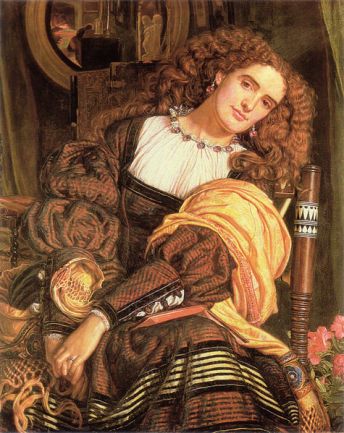
Il Dolce far Niente (1866), by William Holman Hunt. (Photo: Wikimedia)
Also in 1876, Marsden sold William Holman Hunt’s 1866 Il Dolce far Niente, at Christie’s, London, to Lewis Pocock for 281 guineas. [In 2003, this painting was sold at Christie’s, London for £666,650/$1,062,640].
James Tissot painted Algernon Moses Marsden’s portrait in 1877, in the elegant new studio of his home in St. John’s Wood [the setting often is erroneously identified as Marsden’s study]. This portrait, just a bit larger than Tissot’s 1870 portrait of Gus Burnaby, remained in the Marsden family for nearly a century. Algernon Marsden at age 30 appears sophisticated and well-to-do, but his high living cost his father thousands of pounds and resulted in his bankruptcy by August of 1881, at age 34. Marsden was then employed by the King Street Galleries, St. James, and had accumulated debts of £6,218, with assets of only £2,825. In August of 1882, this bankruptcy was annulled because the debts were settled in court through a Trustee to whom Marsden paid “a sum which, with the sum the Trustee has now in hand, will be sufficient to pay all the creditors.”
According to the 1881 Census, Algernon and Louise resided at 97 Linden Gardens, Kensington, with five daughters between the ages of one and seven, plus five servants. Algernon’s 23-year-old niece, Josephine Silva, born in Australia, to Algernon’s step-sister Kate and John Gomes Silva, lived with them as well.
Of Algernon’s remaining ten siblings, six still lived at home: Herbert Philip (32, a tea broker); Adela Louise (24); Stephen Leopold (22, a West India merchant); Isabel Blanche (20); Beatrice Helen (15); and Ida Frances (13).
Isaac Moses Marsden died at home, 4 Kensington Gardens Terrace, in 1884. In one of ten codicils to his will, he states, “my said son Algernon Marsden has recently been adjudged a Bankrupt.” Isaac disinherited Algernon but provided legacies for his wife and children.
In bankruptcy court again in 1887, at 40, Marsden had £1,295 in debts and only £20 in assets. In court, he said that when money came in, he “got rid of it” by gambling, particularly at the racetrack. He admitted to overspending for weeks at Eastbourne, a fashionable resort. He described his profession as an art dealer as a “peculiar and speculative one.” When he added that it was always a “fluke” to get hold of a man with money, he brought laughter from the court. [In 1888, Algernon’s 35-year-old brother, Rodolph, who was a tailor in Hampstead, became bankrupt as well.]
By the 1891 Census, Algernon Moses Marsden, his wife, nine daughters and one son had moved to 82 Redcliffe Gardens, South Kensington. [According to one source, he had eleven children, though perhaps his first son died young: Gerald Howard Algernon (1872 – ?), Sybil Louise (1873 – 1946), Hilda Ethel (1874 – 1906), Muriel Alice (1875 – 1922), Dora Helen Edith (1876 – 1939), Effie Gwendoline Josephine (1880 – 1971), Olga Florelle (1882 – 1963), Madeline Joan Adela (1884 – 1966), Wilfred Humphrey Algernon (1885 – 1916), Mildred Isabel Florence (1887 – 1914), and Constance Barbara Sylvia (1889 – 1972).]
By December, 1900, Algernon Moses Marsden was listed in the London Gazette’s bankruptcy announcements as “lately carrying on business at 28 Basinghall Street, in the city of London, [as a] merchant.”
Bankrupt for at least the third time, Algernon, at age 54, fled to the United States with another woman in 1901. His abandoned wife and ten children continued on at 82 Redcliffe Gardens, South Kensington.
One of the daughters, Dora Helen Edith, married Guiseppe Arbib in 1908. Dora and Guiseppe Arbib had three sons: Reuben Richard (Dick), Albert Maurice (Billy, who emigrated to Israel after World War II), and John Reginald (who emigrated to Australia via New Zealand after WWII and died in Sydney in 2003).
Another of Algernon’s daughters, Sybil Marsden, was, by 1908, a dressmaker with a shop at 69 Church Street, London. A suffragette who went by the name “Mrs. Sybil Mantalini,” she refused to provide details about herself in the 1911 Census. Instead, she wrote this statement, only recently discovered and transcribed by researcher and writer Elizabeth Crawford *, on her Census form:
“I, Mdme Mantalini, a municipal voter and tax payer, refuse to fill in this census paper, as I have no intention of furnishing this government with information and thereby helping them to legislate for women without obtaining their consent or first consulting them in the [missing words] effective way possible & extending the franchise to duly qualified women. As a responsible, law-abiding citizen I have conducted my business for sixteen years; as an employer of labour I have [contributed?] to the wealth of the state and in return I have been taxed for the upkeep of no 10 Downing Street. No 10 Downing Street, the official residence of the prime minister, but converted by his wife into a show-room for a French [dress maker?] (free of all duty and taxation) to exhibit his Paris models and take orders from them to be executed in Paris. I [missing words] with very few exceptions the dressmaking establishments in England are all owned by women, & only women & [missing words] workers. It therefore comes to this, that the only way open to us to protest at ‘our trade’ being ruined in [missing words] our taxes, is to drive home to the government by every method available that women are determined [missing words – perhaps ‘not to be governed’] without their consent.”
Sybil Marsden died in 1946, leaving over £5,000 from her successful dressmaking business.
In 1912, The Times of London reported that Algernon Moses Marsden was bankrupt, but he was living in New York, where he died on January 23, 1920. His tombstone in Mt. Hope Cemetery (Section S, http://mcnygenealogy.com/maps/mt-hope-sec-s.jpg), Rochester, New York, is inscribed: “MARSDEN Algernon Moses of London, Eng.; d Jan 23, 1920 æ 72y” [at the age of 72 years].
Tissot’s 1877 Portrait of Algernon Moses Marsden, which captures the man in his moment of youth and apparent success, was sold by Sotheby’s, London in 1971 for $4,838/£2,000. In 1983, it was sold at Christie’s, London for $65,677/£45,000. [Hammer prices.]
For more information on the Moses Marsden family, see Tony Seymour’s highly informative website: http://tonyseymour.com/people/isaac-marsden
* To read Elizabeth Crawford’s fascinating July 30, 2012 blog post on Sybil Marsden, click here.
Related post:
A Closer Look at Tissot’s “Algernon Moses Marsden”
© 2013 by Lucy Paquette. All rights reserved.
The articles published on this blog are copyrighted by Lucy Paquette. An article or any portion of it may not be reproduced in any medium or transmitted in any form, electronic or mechanical, without the author’s permission. You are welcome to cite or quote from an article provided you give full acknowledgement to the author.

If you do not have a Kindle e-reader, you may download free Kindle reading apps for PCs, Smartphones, tablets, and the Kindle Cloud Reader to read The Hammock: A novel based on the true story of French painter James Tissot. Read reviews.
The Hammock: A novel based on the true story of French painter James Tissot, brings Tissot’s world from 1870 to 1879 alive in a story of war, art, Society glamour, love, scandal, and tragedy.
Illustrated with 17 stunning, high-resolution fine art images in full color
Courtesy of The Bridgeman Art Library
(295 pages; ISBN (ePub): 978-0-615-68267-9). See http://www.amazon.com/dp/B009P5RYVE.


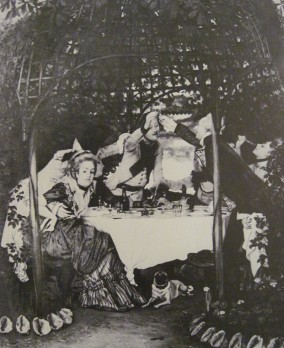








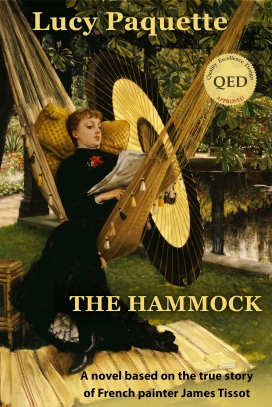





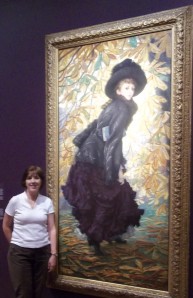

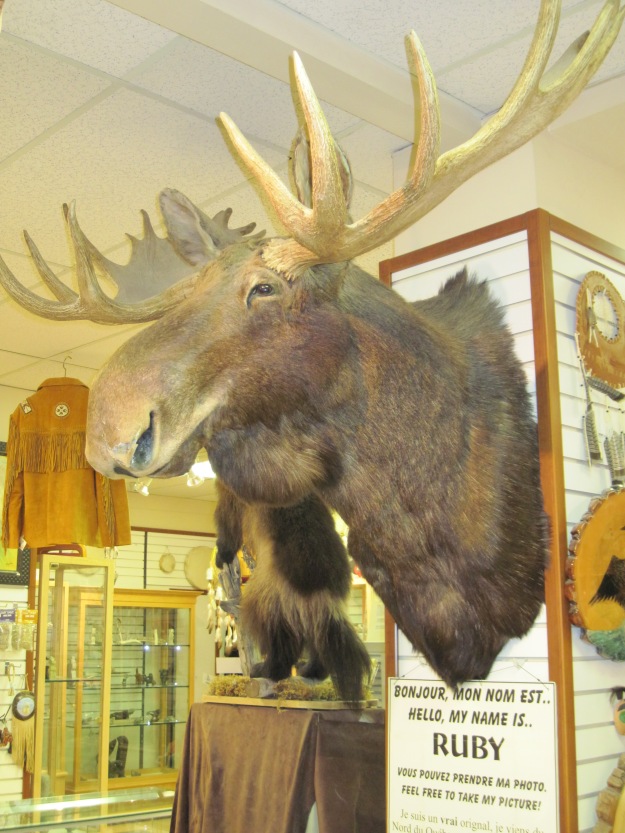
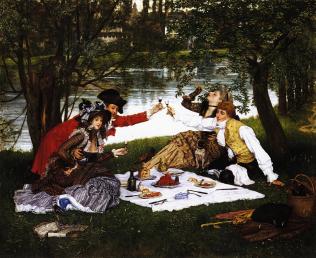 UPDATE: In December, 2018, The National Gallery of Canada announced its acquisition of Tissot’s Partie Carrée (The Foursome, 1870), and the long-term loan from a private Canadian collection of Tissot’s The Japanese Scroll (c. 1872).
UPDATE: In December, 2018, The National Gallery of Canada announced its acquisition of Tissot’s Partie Carrée (The Foursome, 1870), and the long-term loan from a private Canadian collection of Tissot’s The Japanese Scroll (c. 1872).